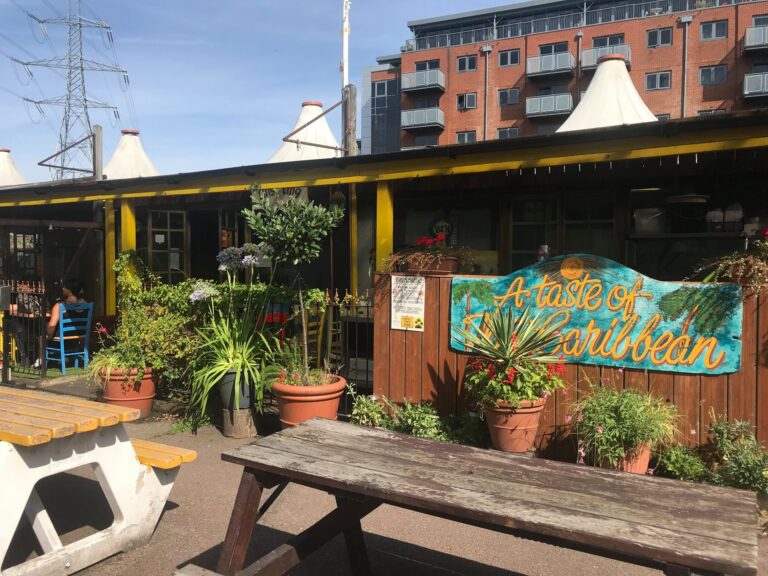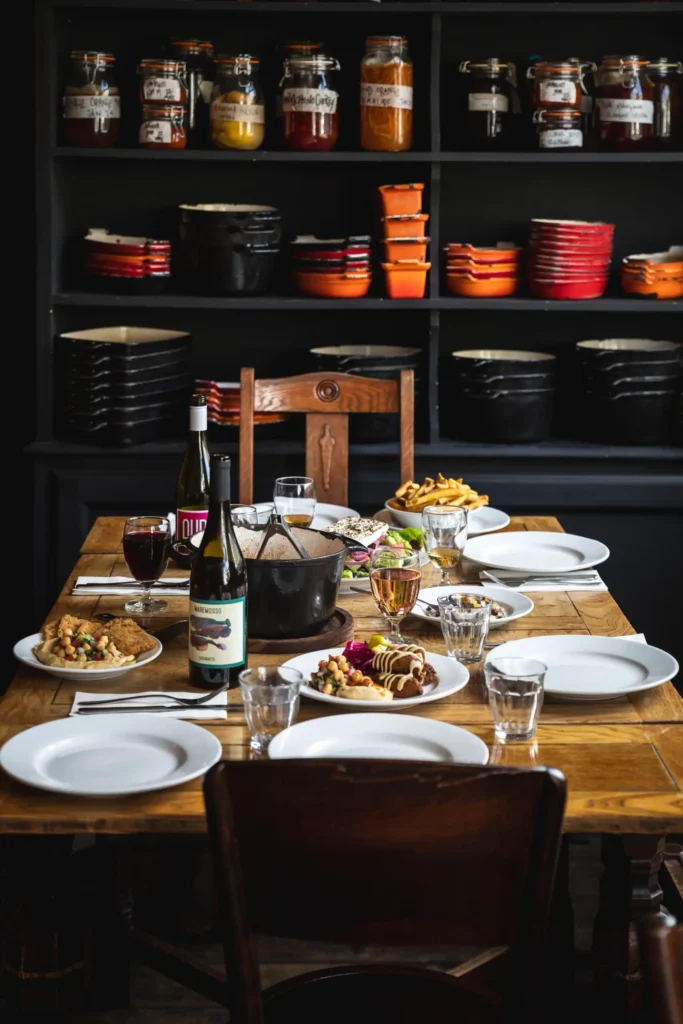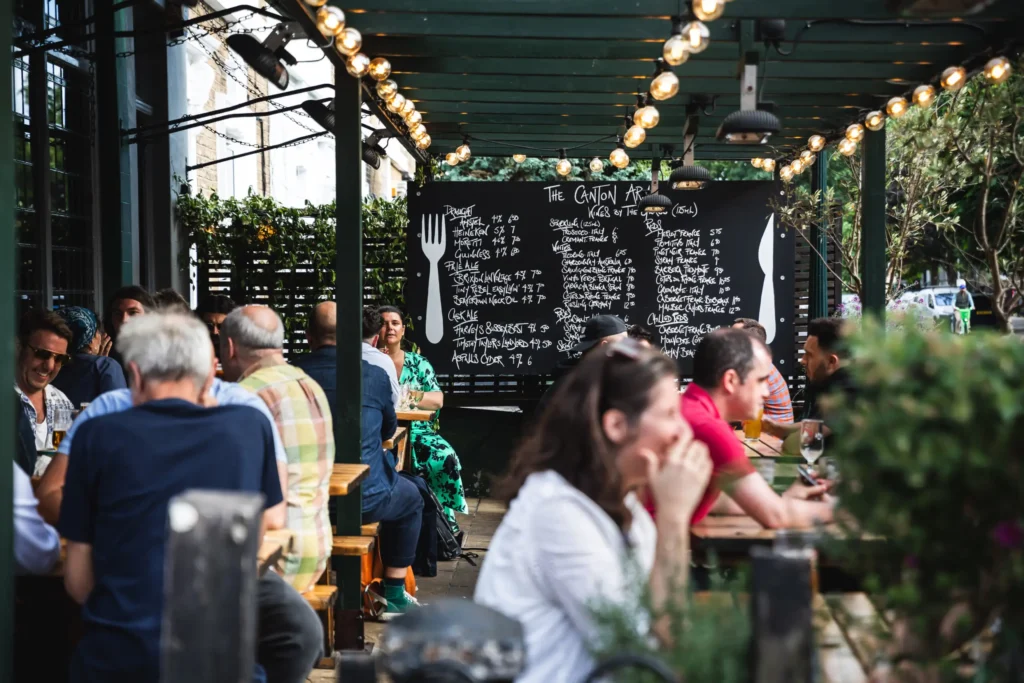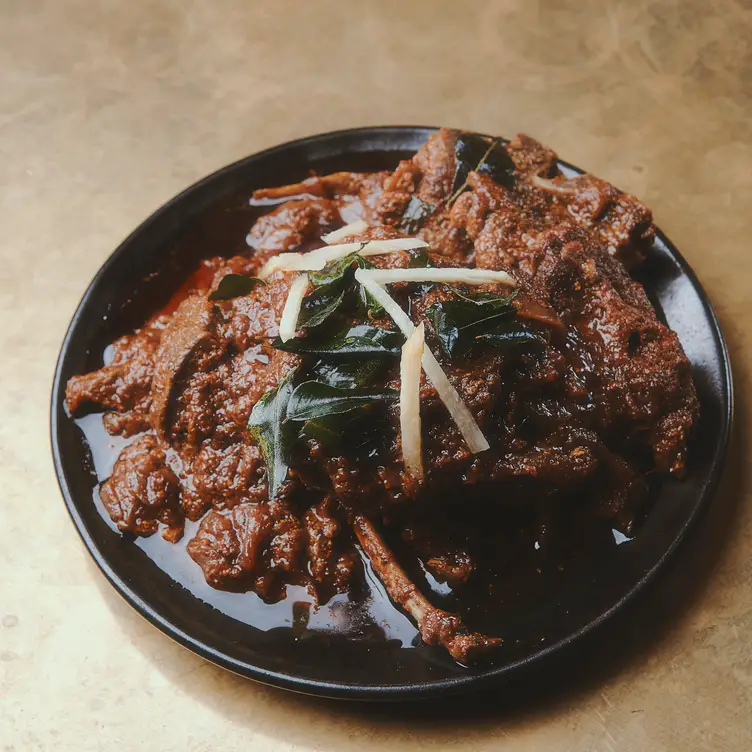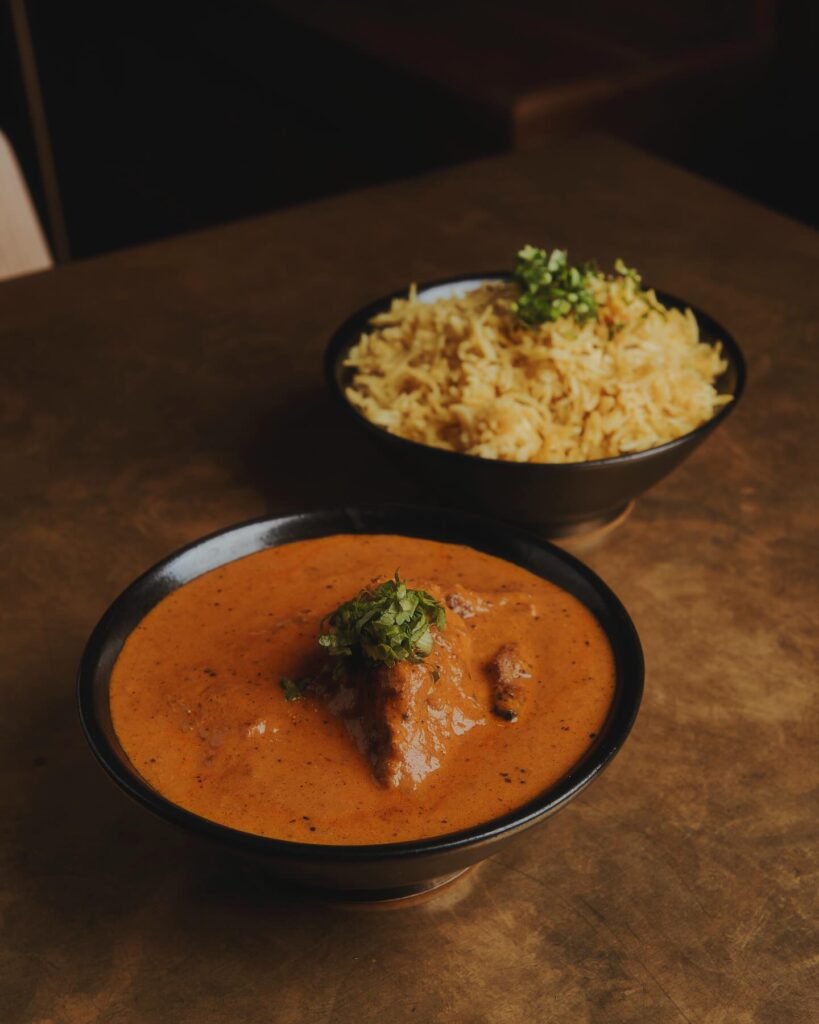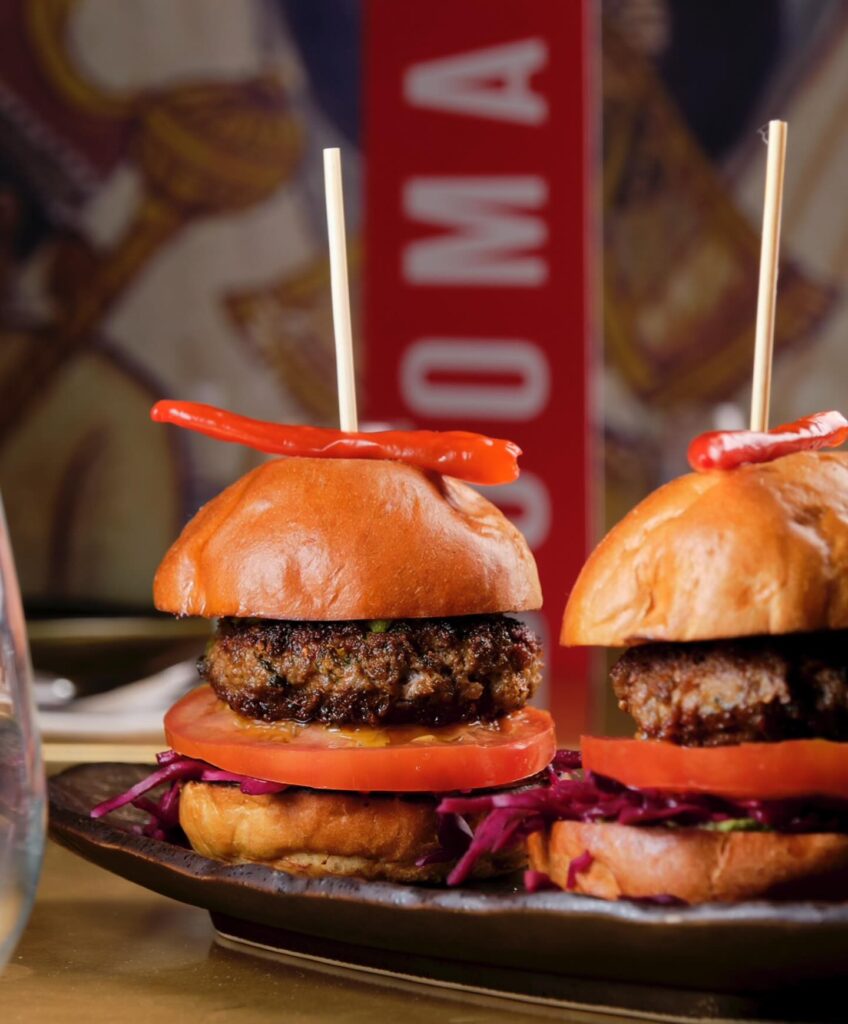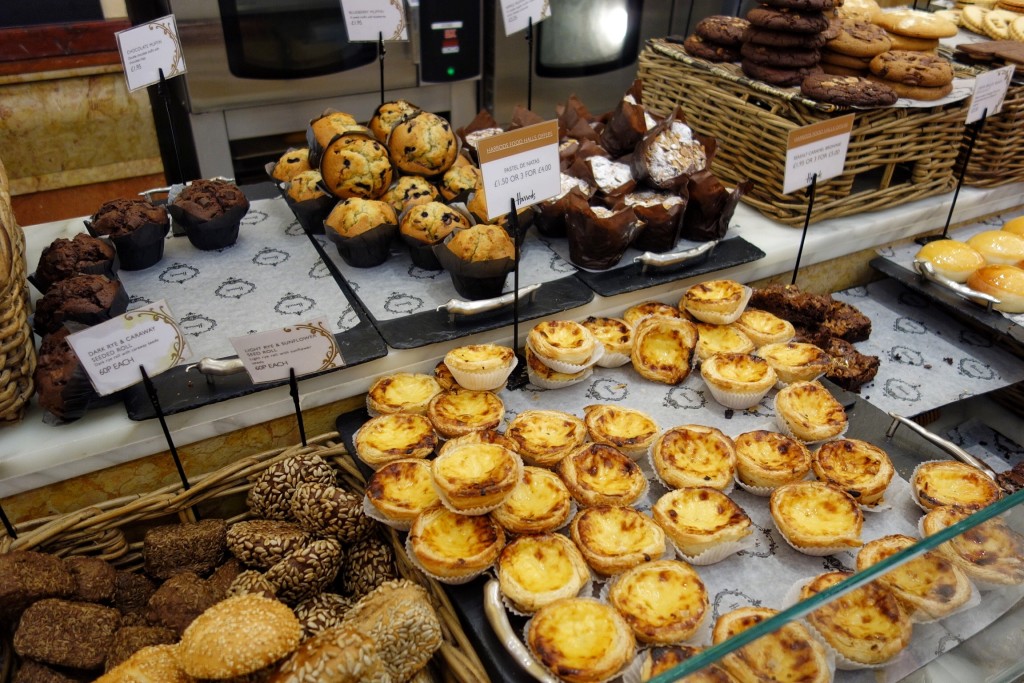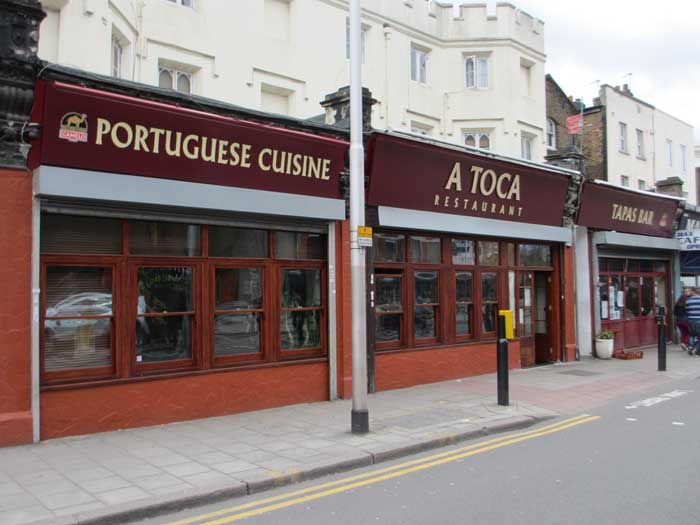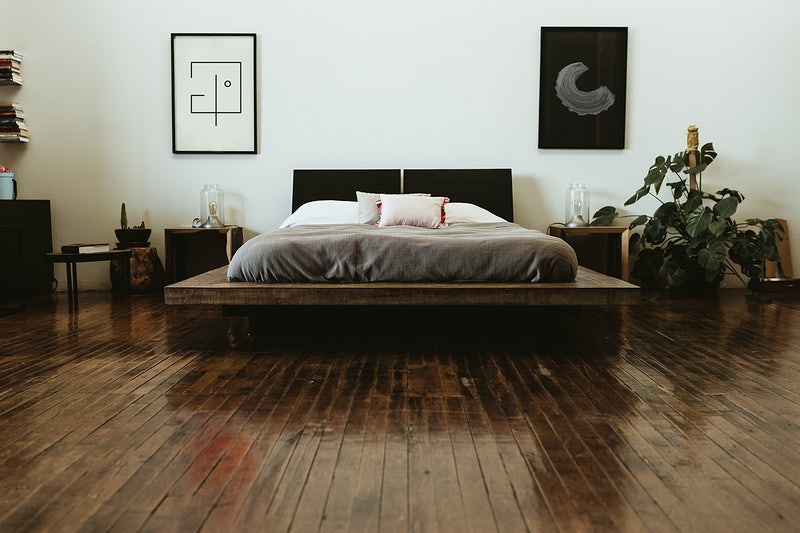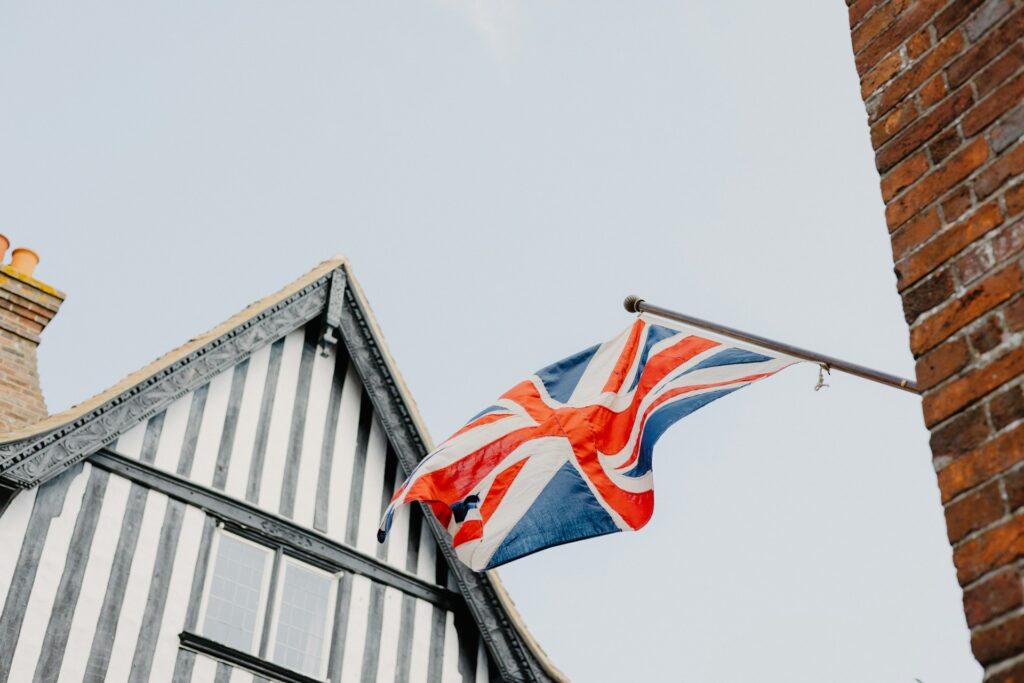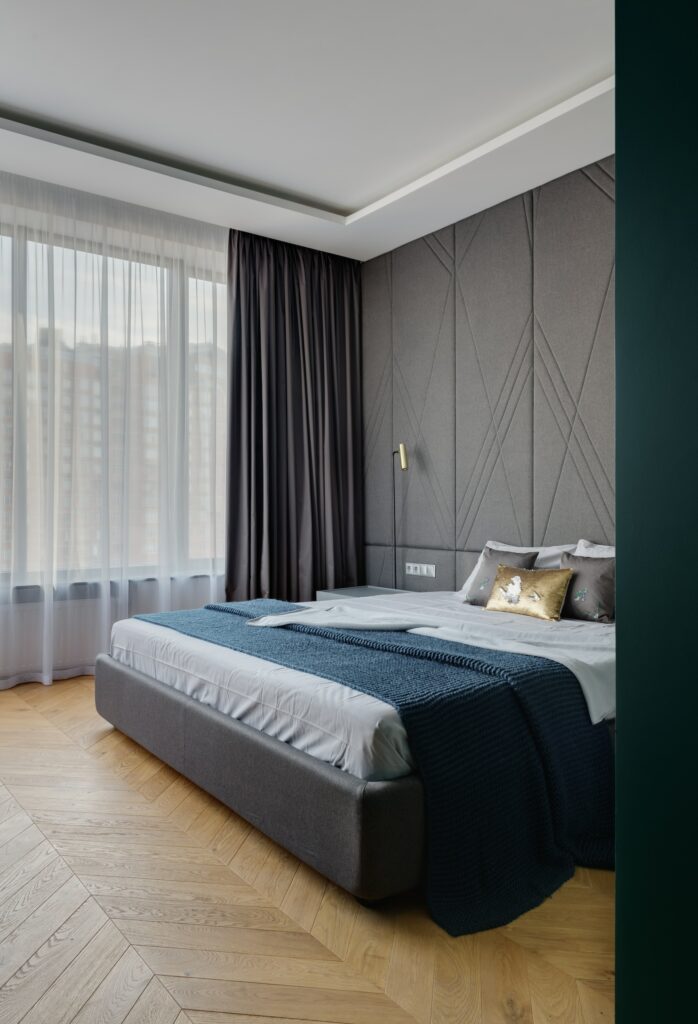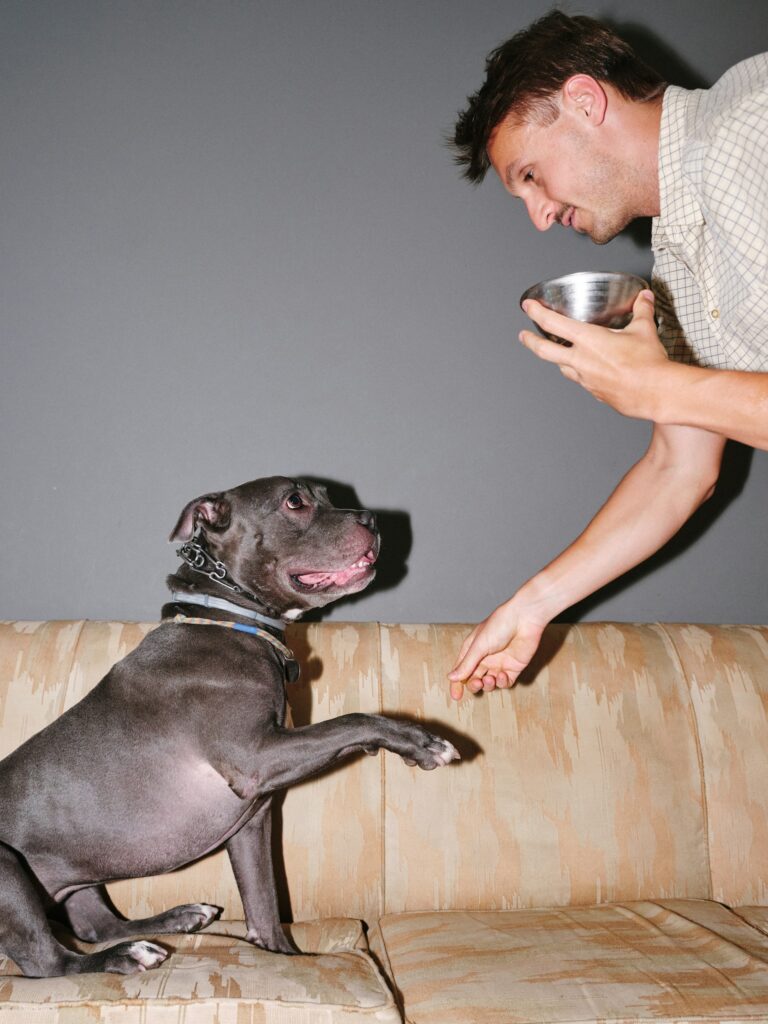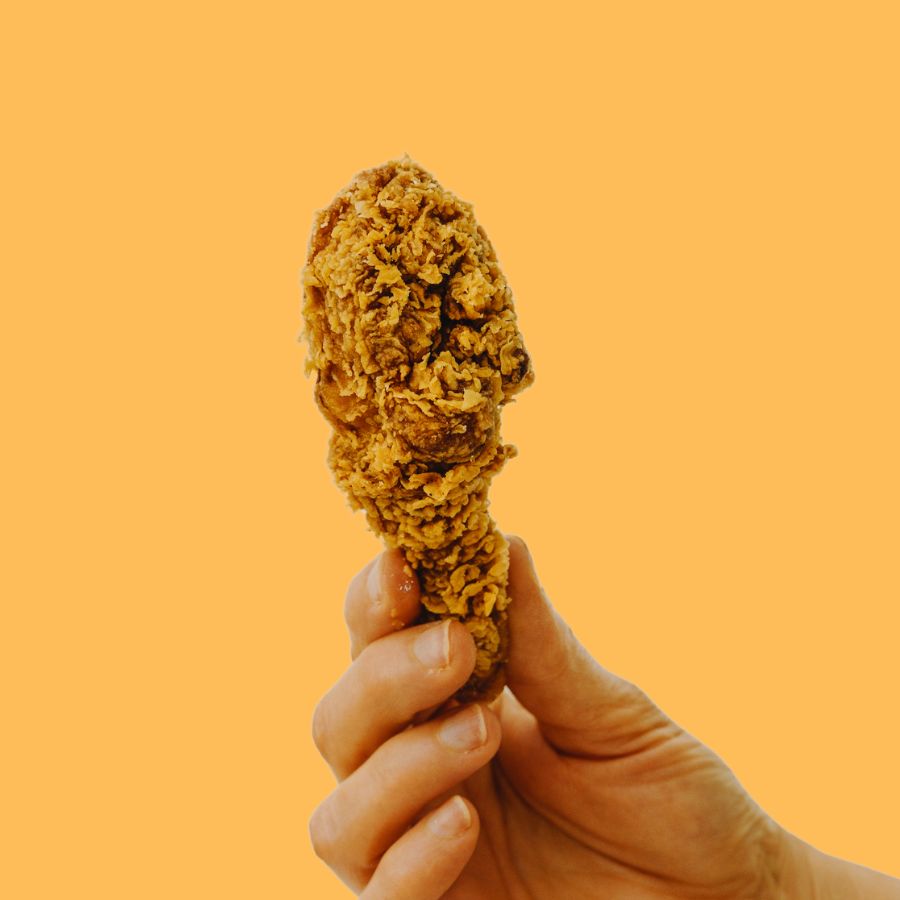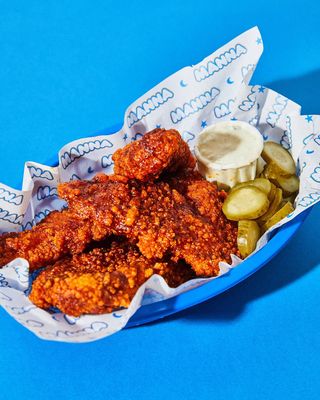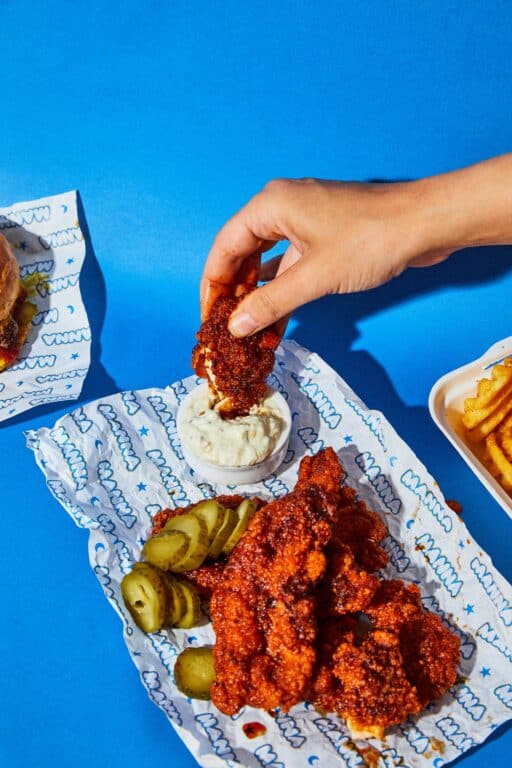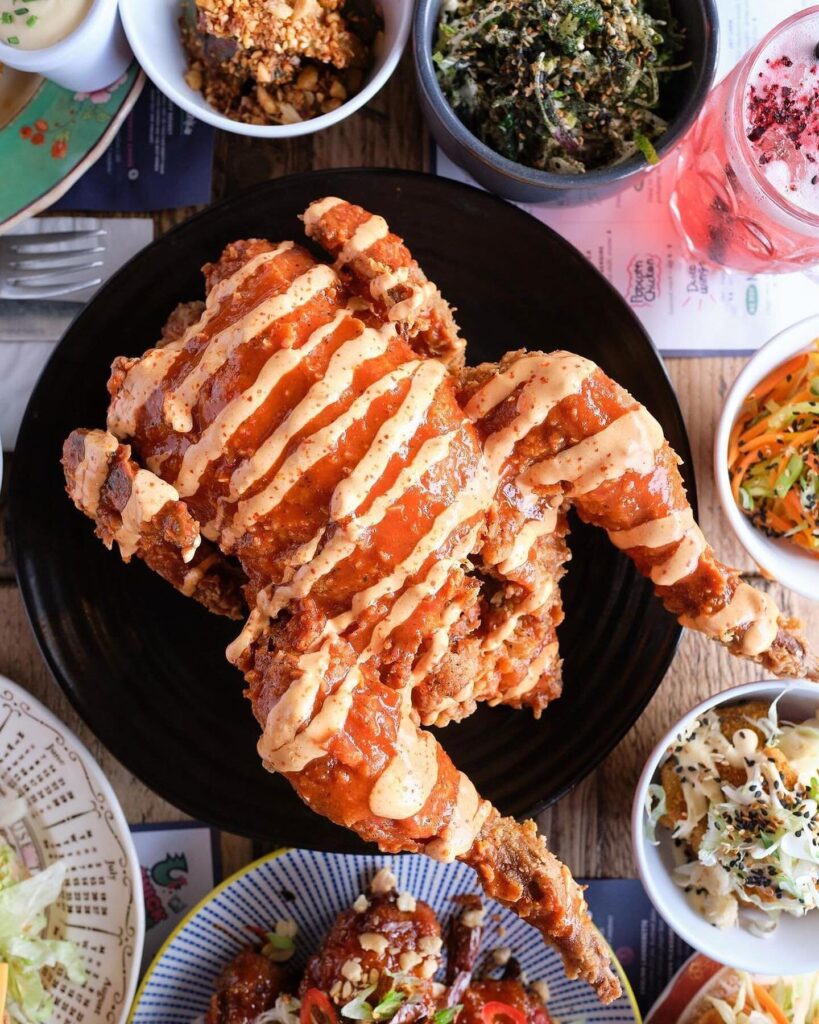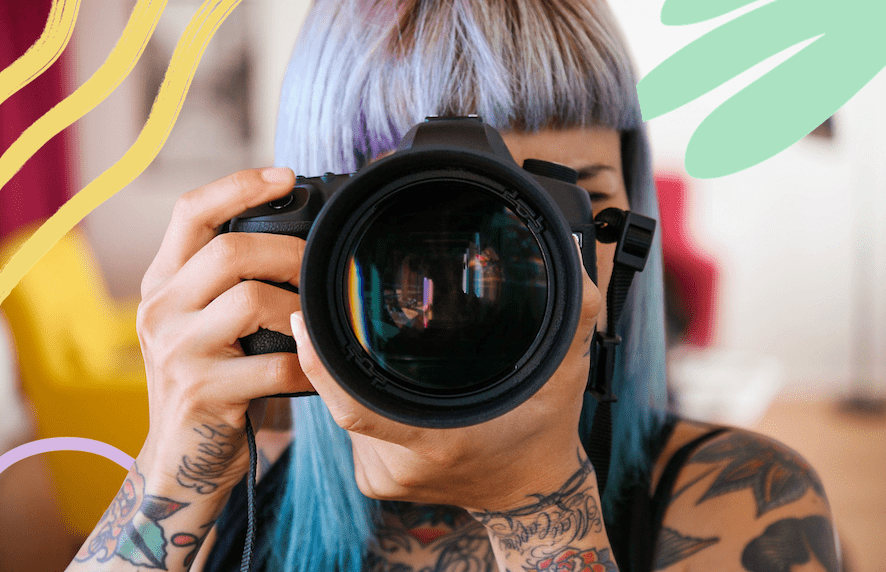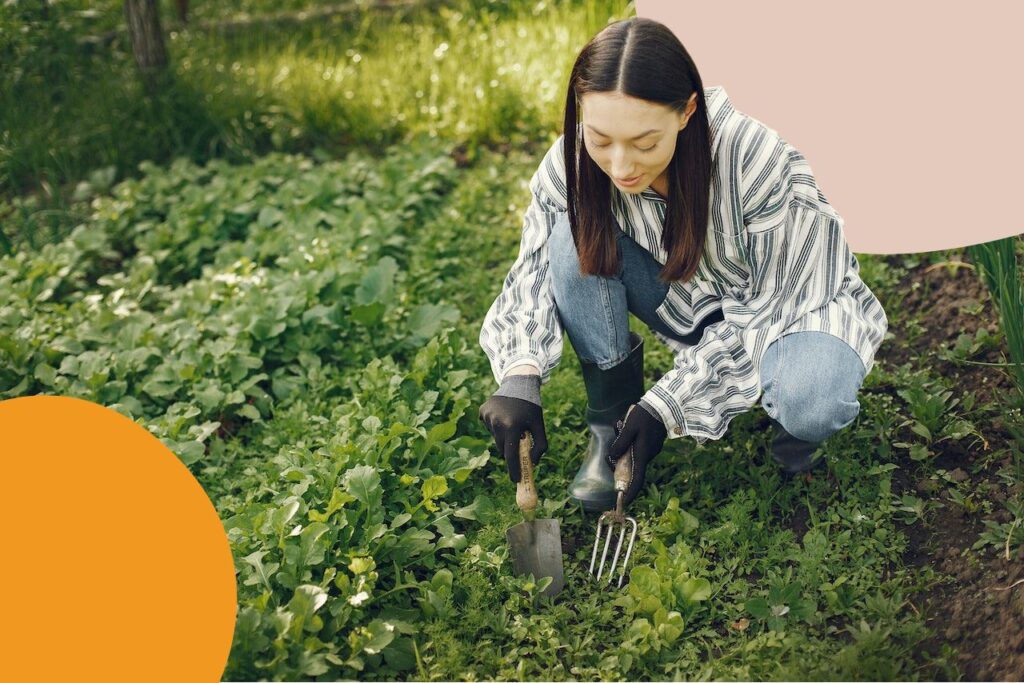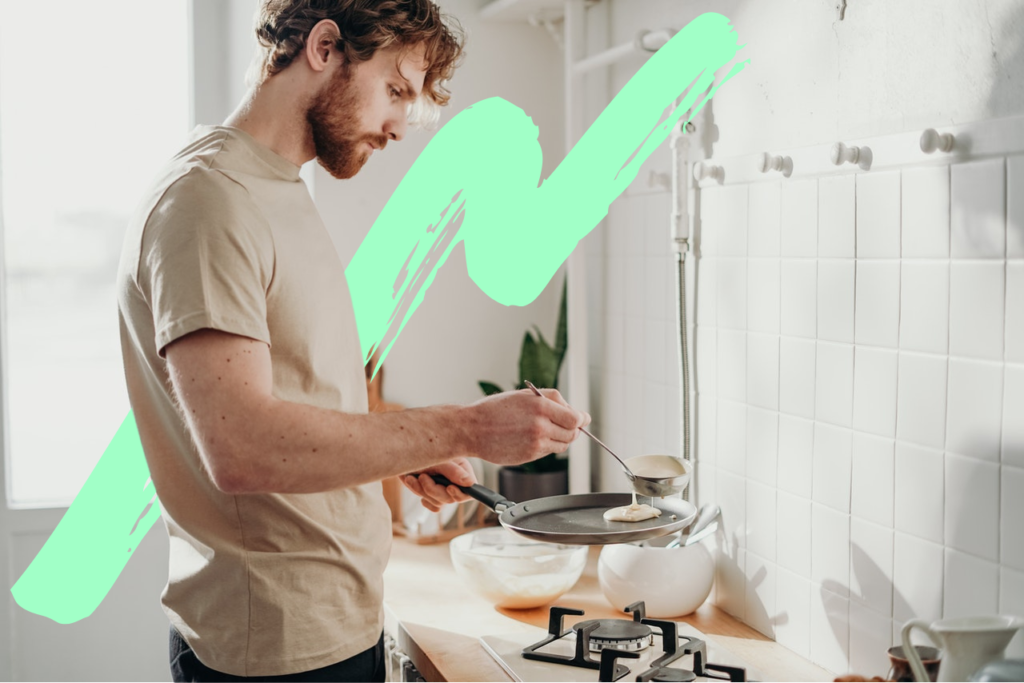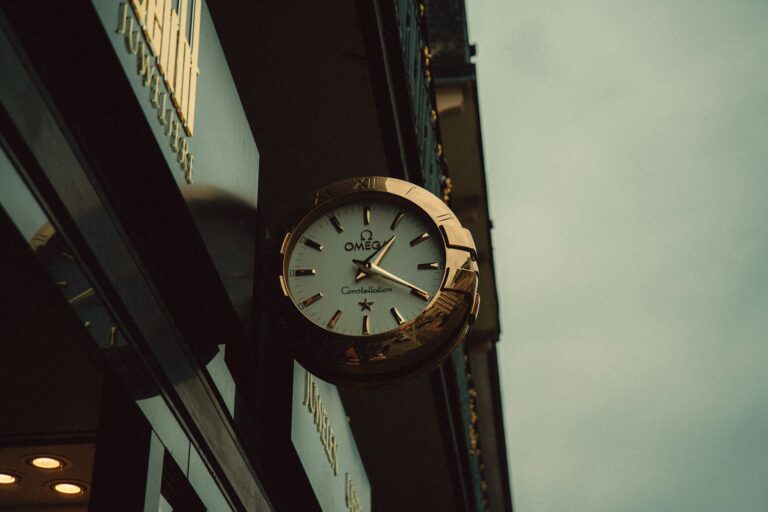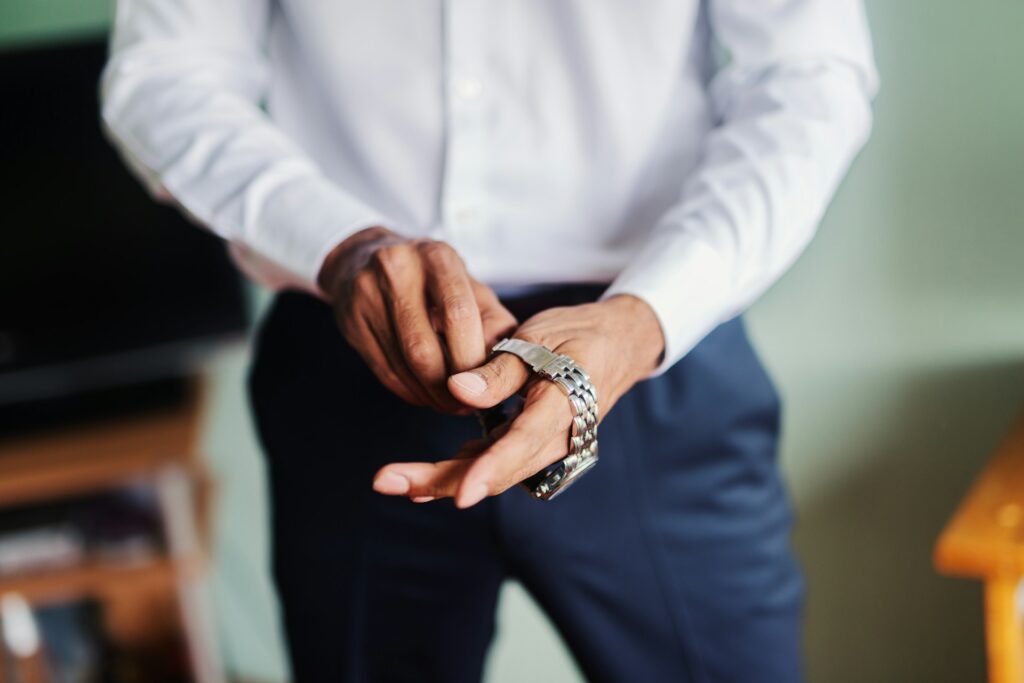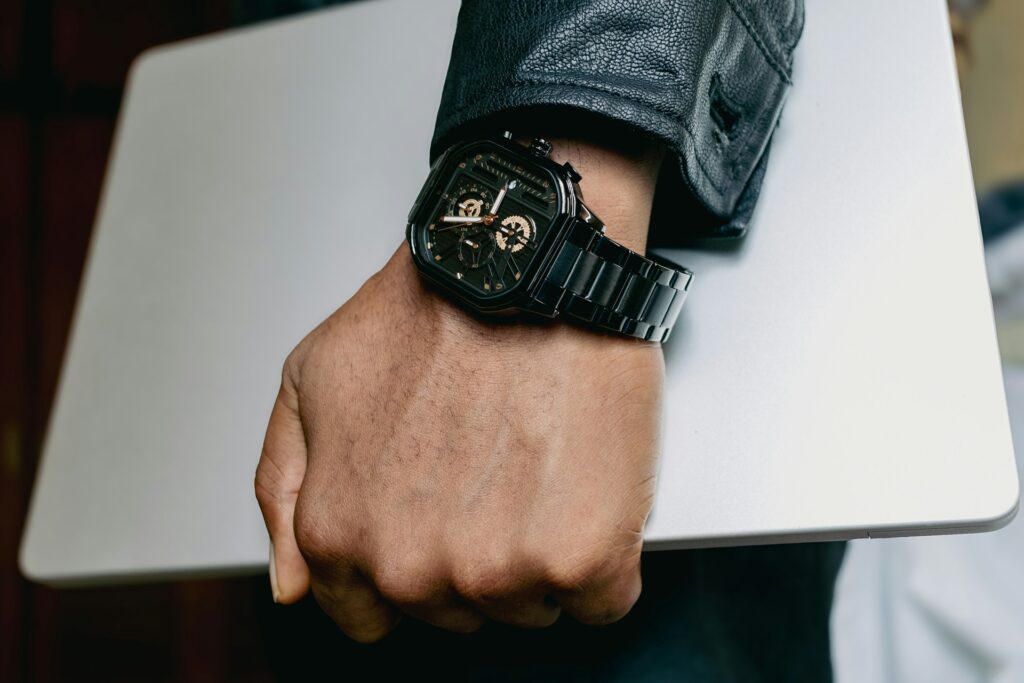Rumble, rattle, repeat. If you’ve ever found yourself gently lulled into a carriage-induced coma, only to be jolted awake by the dreaded announcement, ‘This is Morden,’ fear not. You haven’t reached the culinary equivalent of a dead end; rather, you’ve arrived at a station with a surprisingly awake and appetising food scene just waiting to be explored. So, wipe the sleep from your eyes, because Morden’s got so much more to offer than just a convenient spot for a nap before the return journey.
Once a quiet Surrey parish, Morden’s transformation began in earnest with the arrival of the Underground in 1926, catapulting it into the ‘Metroland’ suburban dream of South London. This historical shift from rural tranquillity to somewhere altogether more bustling laid the groundwork for the community it is today.
This evolving landscape, where a stable local population meets renewed civic investment, creates a fertile ground for a restaurant scene that offers both quality and a sense of belonging. Forget the predictable chain eateries that often greet weary travellers at major transport hubs. We’ve ventured beyond the station concourse, past the usual suspects, to uncover the local spots that make Morden a dining destination in its own right. Here are the best restaurants in Morden.
Verona Italian Restaurant
Ideal for a generous Italian welcome that’ll whisk you off to Bel Paese…
For nearly a decade, Luigi and Wioletta have been running this little slice of Italy on London Road, and Christ, do they know what they’re doing. Step inside Verona and you might just convince yourself you’ve wandered into a backstreet trattoria somewhere in Veneto rather than a spot that’s a stone’s throw from Morden station.
The interior leans hard into traditional Italian charm — think rustic décor that actually feels authentic rather than naff, warm lighting, and that distinctive buzz of a place where locals genuinely gather. It’s the kind of restaurant that’s survived nearly a decade in suburbia not through gimmicks, but by consistently delivering the goods.
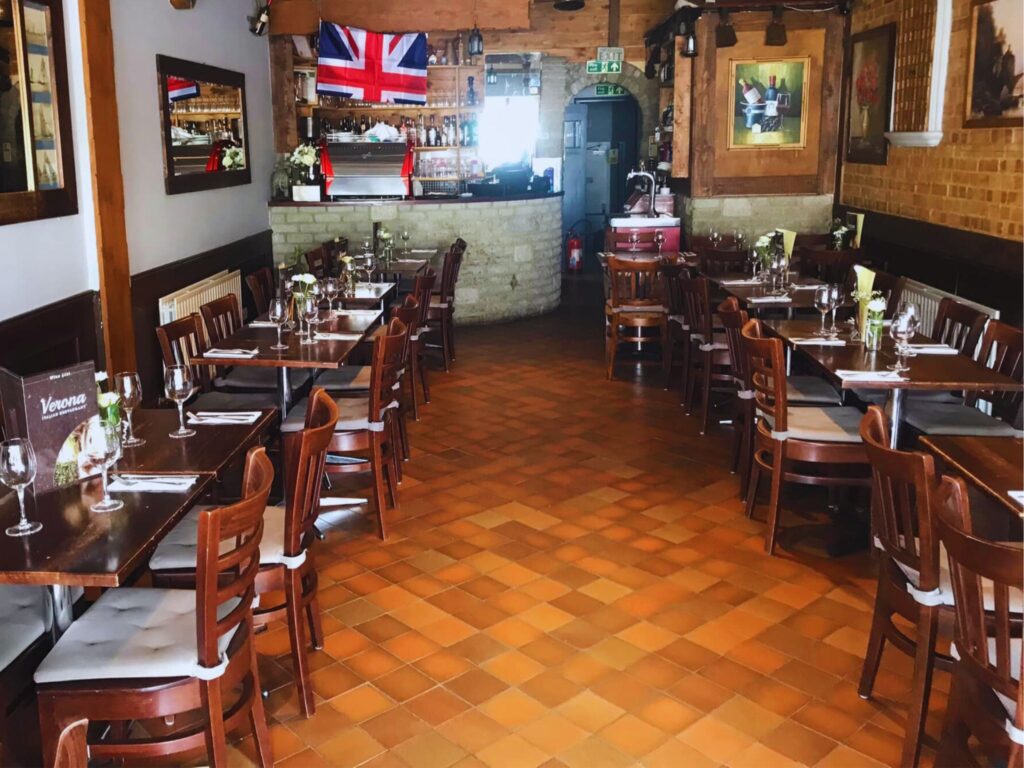
The Pizza Pavarotti, loaded with Parma ham, rocket, and shaved parmesan, hits all the right notes without being overly fussy. The Pollo Principessa arrives in portions that’ll have you questioning London’s usual stingy serving sizes. Yes, there’s cream in the carbonara, and sure, the amatriciana uses lardons not guanciale, but hey, it’s still a satisfying experience all round.
Service strikes that perfect balance between attentive and not annoyingly hovering, while prices remain refreshingly moderate (pizzas around the £12 mark, pastas around £14) for what you’re getting.
Website: veronaitalian.co.uk
Address: 20 Morden Court Parade, London Road, Morden, SM4 5HJ
Takahashi
Ideal for an omakase experience that manages to be inclusive…
Okay, for a genuinely stellar meal, you might have to venture just a little north of Morden and up towards South Wimbledon station. Here, tucked between a kebab shop and a car repair garage on Merton Road, Takahashi doesn’t exactly scream ‘destination dining.’ The unmarked exterior is your first clue that chef Nobuhisa ‘Taka’ Takahashi — a 14-year Nobu veteran — isn’t interested in Instagram theatrics. This 12-seat operation with his wife Yuko feels more like dining at an obsessively perfectionist friend’s house, if that friend happened to have connections to London’s best fish suppliers and some really bloody sharp knives.
The single £160 omakase menu might sound steep for SW19, but it’s relative pocket change compared to what you’d haemorrhage at comparable central London spots. For this, you get around 18 courses journeying from delicate otsumami starters to pristine nigiri, each glistening piece handed over like a precious gem. The sea bream tataki, swimming in citrus-spiked dressing so perfectly balanced you’ll want to lick the plate clean, sets the tone early. The mushroom ajillo takahashi-style — geometrically precise portobello segments crowned with green chili and truffle paste — will have you burning your tongue in impatience.

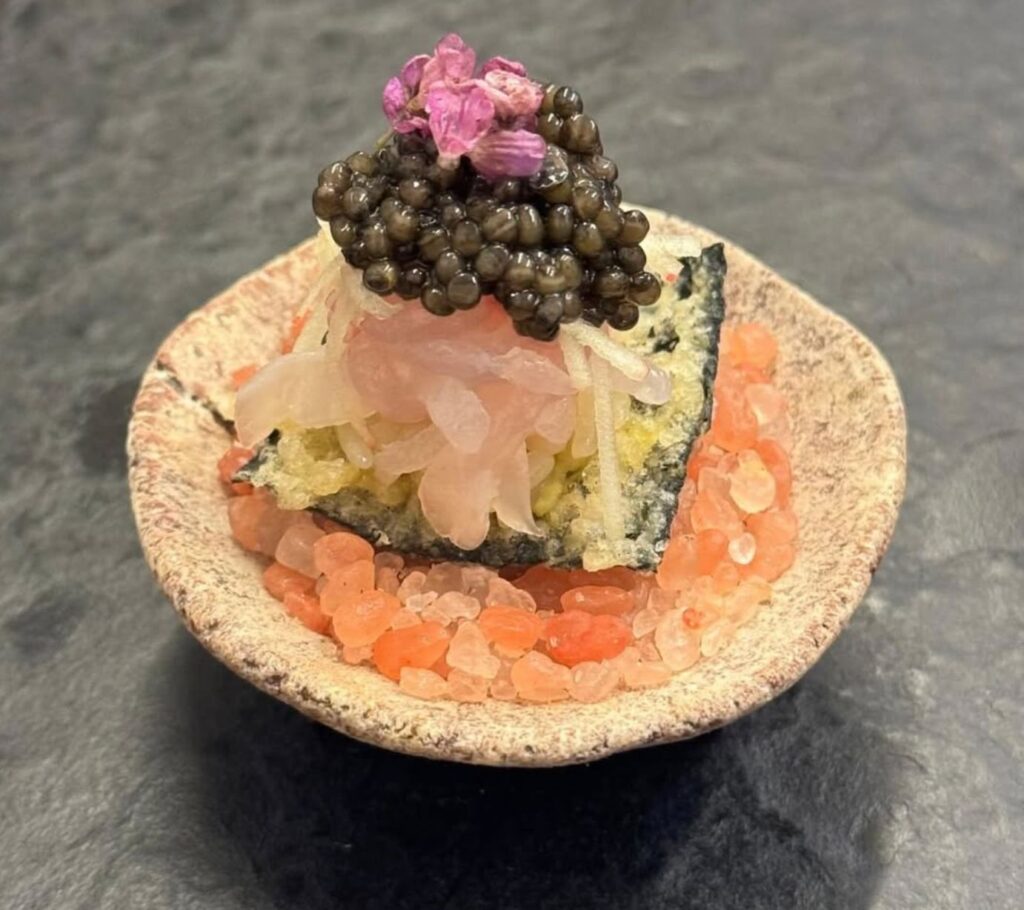
The nigiri procession is where Takahashi truly flexes. Four types of tuna, including buttery otoro that dissolves on contact. Hamachi with a whisper of heat. Scallop kissed with truffle. Here’s the twist: instead of the chef painting each piece with nikiri sauce, you’re handed a tiny brush and bowl to DIY it yourself. It’s either charming participation or clever labour-saving, but it adds playful elements to what can sometimes verge on the overly reverent and ritualistic.
The wagyu nigiri deserves special mention — this is Joshu Wagyu from Japan, arriving pre-seasoned to perfection. It’s the kind of bite that makes you understand why people write poetry about beef.
It should be mentioned that Andy Hayler found it “pleasant enough” but noted it would seem “quite ordinary” to anyone who’s eaten extensively in Japan. Fair point, but that’s like saying a Bentley is ordinary if you’re used to Bugattis. For those not jetting to Tokyo monthly, Takahashi offers something genuinely special in Zone 3.
There’s a sake pairing available, for £95. Do be aware that it needs to be arranged in advance. Prepare for a 50% deposit. The restaurant can’t handle allergies due to its tiny kitchen, and atmosphere is minimalist to the point of austere. Some find it stark; others appreciate how it keeps focus on the plate. Anyway, it’s significantly better than your local chain, more accessible than Michelin-starred showstoppers, and intimate enough to feel special.
Website: takahashi-restaurant.co.uk
Address: 228 Merton Road, London SW19 1EQ
The Morden Brook
Ideal for when you need a pub roast without the Central London markup…
Sometimes you just want a pint, a roast, and Sky Sports. No shame in that game, and The Morden Brook delivers all three without pretension or wallet damage. This Greene King establishment knows its audience — families wanting a Sunday lunch that won’t lay waste to the bank balance, football fans seeking refuge, and locals who appreciate a dog-friendly boozer.
The menu is pub classics done capably enough: Hunter’s Chicken for £9.69 precisely, fish and chips for not much more, and their ‘legendary’ (their words, not ours) Sunday roast that comes with big, buxom Yorkshire puddings and gravy that doesn’t taste like it emerged from a packet. The ‘Two pub classics for £13.99’ deal running all day, every day is the kind of value that makes you question why you ever bothered with overpriced gastropubs.



Sure, it’s not going to revolutionise British dining, but that’s probably the point. The Morden Brook succeeds because it knows exactly what it is and you know exactly what you’re getting: a reliable local that delivers satisfying grub in generous portions.
With Carlsberg at £3.99 (what?!) a pint and multiple screens for live sports, this is community pub-ing done properly.
Website: greeneking.co.uk
Address: Lower Morden Lane, Morden, SM4 4SS
Lahori Mahal
Ideal for Pakistani food that doesn’t hold back on the heat…
If you’ve woken up craving confident spicing and a judicious hand with the chilli, Lahori Mahal is calling your name. This no-nonsense Pakistani restaurant on London Road serves up Lahori cuisine with the kind of bold flavours that’ll remind you why Pakistani food is having something of a moment.
The Afghani charsi lamb karahi is the standout — a rich, deeply spiced stew that’s as addictive as it sounds. Their biryanis are generously portioned and aromatic, while the lamb seekh kabab, dinky though it is, at under £2.50 each represents some of the best value meat in South London. The “must try mix grill” promoted on their TikTok isn’t just social media hype — it’s genuinely excellent.
The atmosphere might be more functional than fancy, but who cares when the food hits this hard? This is the kind of robust cooking that reflects Morden’s increasingly diverse food landscape, and we’re here for every minute of it.
Instagram: @lahorimahalrestaurant
Address: 117 London Road, Morden, SM4 5HP

Superfish
Ideal for fish and chips that’s not changed since 1971…
Some things don’t need fixing, and Superfish is proof. This Morden institution has been serving gold-standard fish and chips for over 50 years, and they’ve stuck to what works: quality fish, decent batter, and hearty portions served with a smile.
The setting blends “American Family Diner and French Bistro” vibes (their words, not ours), but the real charm lies in those little touches — like the complimentary prawns for dine-in customers and unlimited French bread and butter. It’s these gestures that have endeared them to locals for decades.


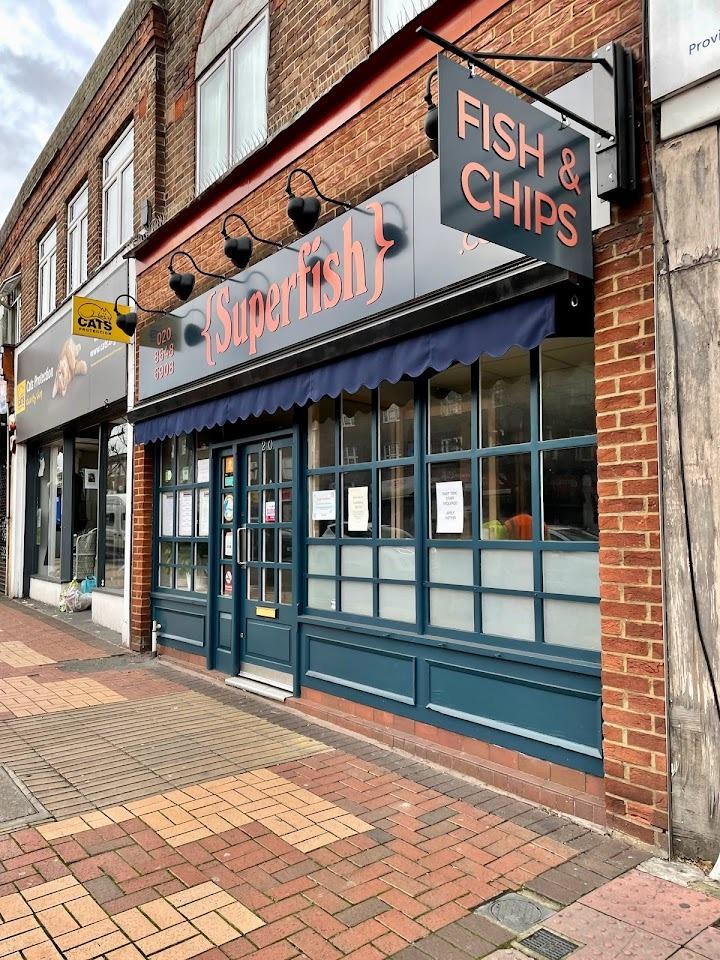
Prime fillet of cod comes in three sizes (small £10.50, large £12.50, extra-large £15.00), while options like huss, whole tail scampi and the restaurant’s ‘superbites’ (essentially fritto misto, and the best thing on the menu, too) provide alternatives for the non-cod crowd.
This isn’t about reinventing the wheel; it’s about executing a British classic with care and consistency. Sometimes that’s exactly what you need.
Website: superfishuk.co.uk
Address: 20 London Road, Morden, SM4 5BQ
Miga Korean Fusion
Ideal for Korean soul food that won’t break the bank…
Miga brings a taste of Seoul’s convenience culture to Aberconway Road, focusing on the kind of Korean comfort food that’s perfect for a quick, flavourful fix. While their Hackney sibling might be earning Michelin recognition, the Morden branch (run by the matriarch of the family) keeps things accessible with gimbap, cupbap, and other Korean favourites. The yakisoba (stir-fried noodles) selection is particularly enjoyable, the barbecue pork number our usual order, usually preceded by a round of takoyaki, those gorgeously tacky octopus dumplings which never fail to hit the spot.

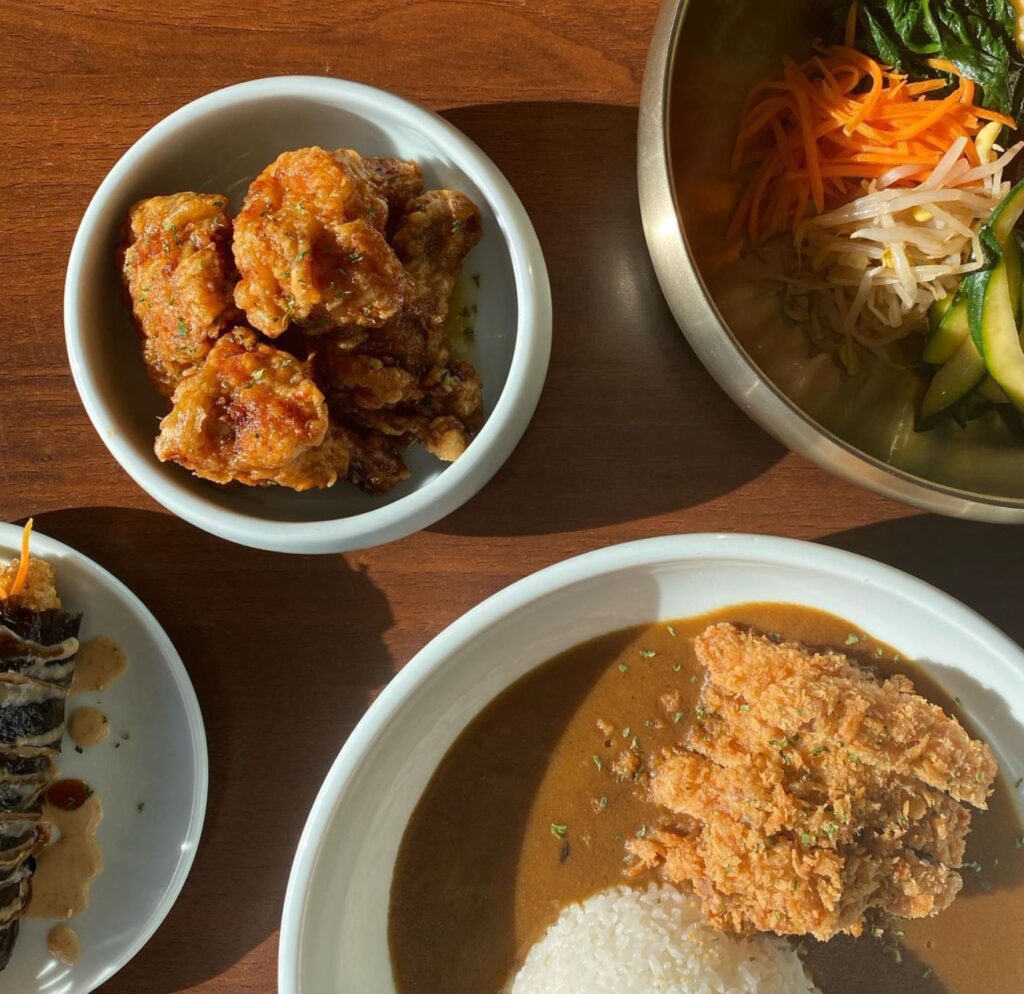
The kimchi is homemade, the flavours fresh and invigorating, and the portions heaving. This is Korean food designed for busy lives rather than food critics, and there’s absolutely nothing wrong with that approach.
Instagram: @miga.morden
Address: 42 Aberconway Road, Morden, SM4 5LF
Bella Donna
Ideal for Italian comfort food with minimal fuss and frippery…
Since 1999, Bella Donna has delivered exactly what its name promises: beautiful, traditional Italian cooking that doesn’t try to be anything other than satisfying neighbourhood food.
The breadth of the menu suggests a restaurant equipped for proper sit-down dining rather than just takeaway convenience. It’s the kind of local Italian that every area needs — reliable, welcoming, and committed to doing familiar dishes well rather than chasing culinary trends.
Become a regular, and you’ll be greeted with real warmth when you walk in. Scrap that, you will be even if this is your first time. If you fall in the latter camp, do order the parmigiana melanzane – a cute little puck of layered aubergine, mozzarella and tomato sauce that is thoroughly comforting. Taking that theme and running with it, we’re big fans of the fegato, too; grilled calf’s liver with bacon and onions. It’s wonderful.
End with a pitch perfect torta della nonna and the inevitable glass of limoncello, and totter off back to the tube hoping you’ll fall asleep on the Northern Line again next week, if only for the excuse to visit Bella Donna again.
Website: belladonna.one
Address: 87 London Road, Morden, SM4 5HP
Ganley’s Irish Bar
Ideal for great Guinness and a Sunday carvery that’ll sort you right out…
Since 2003, Ganley’s has been bringing a slice of Ireland to London Road, complete with county shields on the ceiling and the kind of atmosphere where “banter flows as freely as the Guinness.” It’s unapologetically Irish in the best possible way — warm, welcoming, and never taking itself too seriously.
The Sunday carvery is the main event here, with massive portions clocking in at £18.95 for a plate featuring all available meats plus vegetables. Yes, it’s a touch heavy-handed, but it does the job. Beyond Sundays, their traditional Irish breakfast comes with black and white pudding, while dishes like Irish stew keep things pleasingly hearty and on brand.
Multiple screens show everything from Premier League to GAA, karaoke and quiz nights provide midweek entertainment, and the Guinness is on point. What’s not to love?
Website: ganleys.co.uk
Address: 43-47 London Road, Morden, SM4 5HP

Blue Junction (At The Crown)
Ideal for Indian grill dishes in a buzzing sports bar atmosphere…
Operating from The Crown since 2015, Blue Junction brings together the best of Indian bar and grill cooking with the social atmosphere of a proper boozer. It’s a combination that works predictably well, especially when you’re craving tandoor-grilled meats with your football.
The menu focuses on grilled specialities and curry house classics: chicken tikka masala, Delhi butter chicken, and various biryanis that include a standout Hyderabadi gosht lamb, but the majority of punters are here for the buffet menu, and all-in, all-you-can-eat extravaganza for just £24.95 that features that headlining tikka masala as well as a whole host of other goodies (the lollipop chicken is particularly good).



Chuck in another £3 and you’ve got yourself bottomless soft drinks. Hey, it’s not going to win any stars anytime soon, but Blue Junction is an eminently satisfying place to eat.
Website: bluejunction.co.uk
Address: 1 Crown Lane, Morden, SM4 5DA
Ting ‘n’ Ting
Ideal for Caribbean flavours in the unique setting of Merton Abbey Mills…
We’ve saved arguably the best ‘till last here. Technically just outside Morden, but close enough to count, Ting ‘n’ Ting brings soulful Caribbean cooking to the historic Merton Abbey Mills complex. The setting alone — a former textile works turned artisan market — makes it worth the short journey.
Their award-winning mutton curry lives up to the hype, while jerk chicken cooked on a proper charcoal barbecue drum delivers that essential smokiness. It’s a generous (and generously spiced) affair with whole meal deals like jerk pork or chicken curry (both £11.50) coming with rice and peas, Caribbean slaw, and fried plantain — basically everything you need for a Caribbean feast.


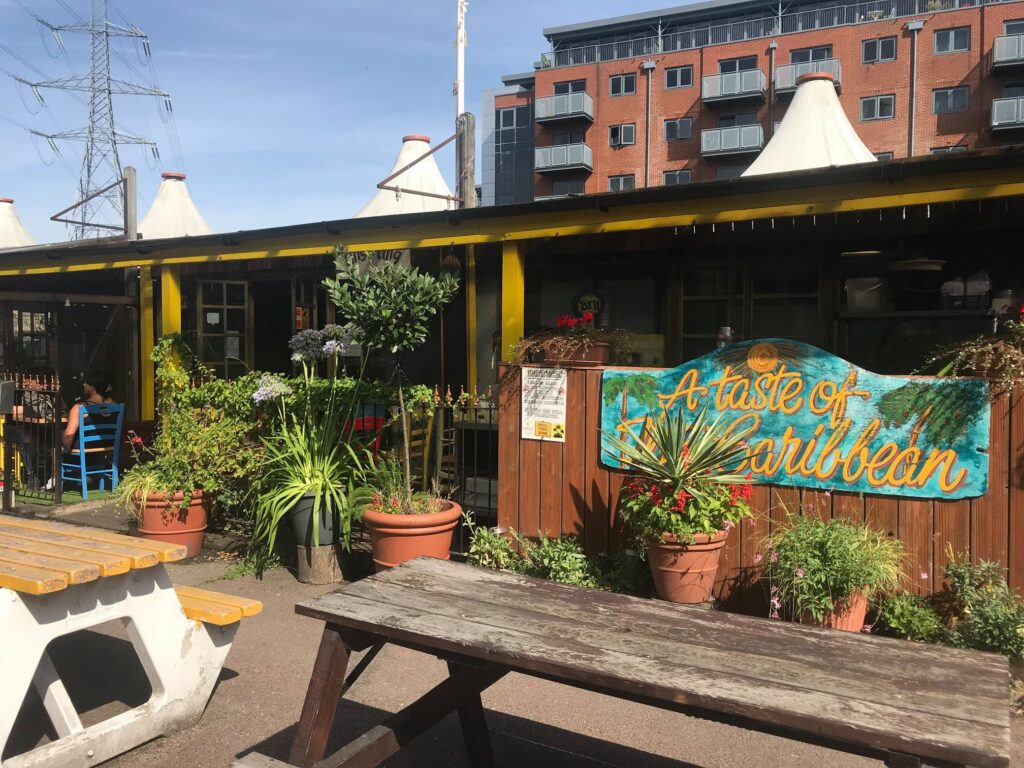
Roti wraps (around £9.80) provide a lighter, more portable option, while vegetarian dishes like sweet potato curry ensure everyone’s catered for.
Website: tingnting.com
Address: Unit 2, The Pavilion, 2 Watermill Wy, London SW19 2RD
The Bottom Line
Next time the Northern Line deposits you at its supposed terminus, don’t just dream of distant food capitals. Morden’s quietly assembled a food scene that punches above its weight. Sometimes the best discoveries happen when you’re forced to wake up at the end of the line.

